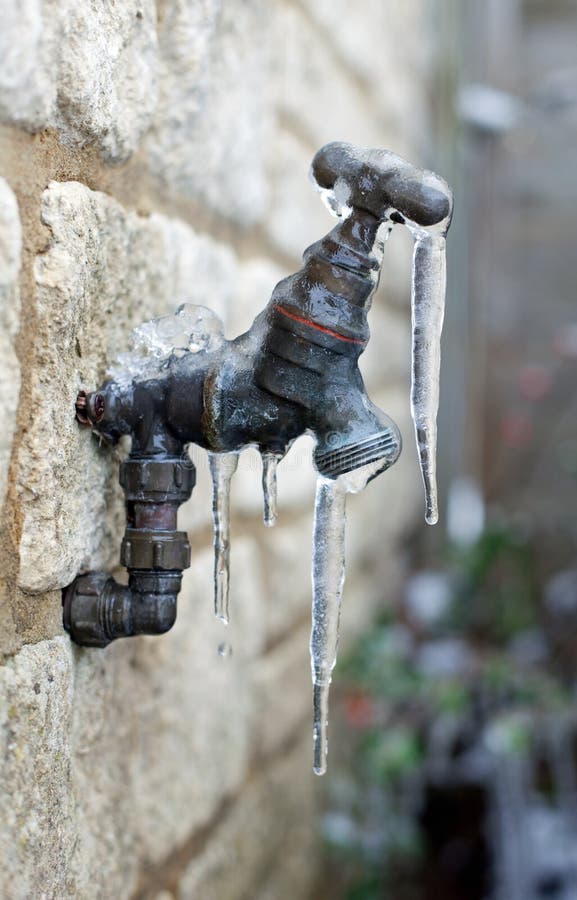This post on the next paragraphs pertaining to How To Avoid Freezing Pipes is pretty much entertaining. Read it for your own benefit and see what you think of it.

Winter can wreak havoc on your plumbing, especially by freezing pipelines. Here's just how to stop it from happening and what to do if it does.
Introduction
As temperature levels drop, the risk of frozen pipelines boosts, possibly bring about expensive repair work and water damage. Comprehending how to avoid frozen pipelines is essential for homeowners in cool environments.
Recognizing Icy Pipelines
What causes pipelines to freeze?
Pipelines freeze when subjected to temperatures listed below 32 ° F (0 ° C) for expanded durations. As water inside the pipelines ices up, it expands, taxing the pipe wall surfaces and possibly triggering them to burst.
Risks and damages
Frozen pipelines can result in water interruptions, residential or commercial property damage, and pricey fixings. Ruptured pipelines can flood homes and create considerable architectural damage.
Signs of Frozen Pipes
Determining icy pipelines early can avoid them from rupturing.
Exactly how to determine icy pipelines
Seek reduced water flow from taps, unusual smells or sounds from pipelines, and noticeable frost on exposed pipes.
Prevention Tips
Protecting vulnerable pipelines
Cover pipes in insulation sleeves or use heat tape to shield them from freezing temperatures. Concentrate on pipelines in unheated or outside locations of the home.
Heating techniques
Maintain indoor rooms properly warmed, especially areas with plumbing. Open up cabinet doors to permit warm air to circulate around pipes under sinks.
Protecting Exterior Pipes
Yard pipes and outside faucets
Separate and drain pipes garden pipes prior to wintertime. Mount frost-proof faucets or cover exterior faucets with protected caps.
What to Do If Your Pipelines Freeze
Immediate actions to take
If you suspect icy pipelines, keep faucets open to ease stress as the ice melts. Make use of a hairdryer or towels soaked in warm water to thaw pipes gradually.
Long-Term Solutions
Architectural adjustments
Consider rerouting pipes away from exterior walls or unheated areas. Include added insulation to attics, cellars, and crawl spaces.
Upgrading insulation
Buy premium insulation for pipes, attics, and wall surfaces. Correct insulation assists maintain regular temperatures and reduces the danger of frozen pipelines.
Verdict
Stopping frozen pipes needs positive steps and fast reactions. By understanding the causes, signs, and preventive measures, home owners can shield their plumbing during winter.
6 Proven Ways to Prevent Frozen Pipes and Protect Your Home
Disconnect and Drain Garden Hoses
Before winter arrives, start by disconnecting your garden hoses and draining any remaining water. Close the shut-off valves that supply outdoor hose bibs and leave the outdoor faucet open to allow any residual water to drain. For extra protection, consider using faucet covers throughout the colder months. It’s also important to drain water from any sprinkler supply lines following the manufacturer’s directions.
Insulate Exposed Pipes
Insulating your pipes is an effective way to prevent freezing. Pipe insulation is readily available at home improvement stores and is relatively inexpensive. Pay close attention to pipes in unheated areas such as the attic, basement, crawl spaces, or garage. Apply foam insulation generously to create a buffer against the cold. You can also wrap your pipes in heat tape or thermostat-controlled heat cables for added warmth.
Seal Air Leaks
Inspect your home for any cracks or openings that could let in cold air. Seal any holes around the piping in interior or exterior walls, as well as the sill plates where your home rests on its foundation. Additionally, make sure to keep your garage door closed unless you’re entering or exiting. Leaving it open creates a significant air leak that can lead to frozen pipes.
Allow Warm Air Circulation
During cold snaps, it’s essential to allow warm air to circulate evenly throughout your home. Leave interior doors ajar to promote better airflow. Open kitchen and bathroom cabinets to help distribute heat consistently around the rooms. If you have small children or pets, be sure to remove any household chemicals or potentially harmful cleaners from open cabinets for safety.
Let Faucets Drip
A small trickle of water can make a big difference in preventing ice formation inside your pipes. When temperatures drop significantly, start a drip of water from all faucets served by exposed pipes. This continuous flow helps prevent the water from freezing. Additionally, running a few faucets slightly can relieve pressure inside the pipes, reducing the chances of a rupture if the water inside does freeze.
https://choateshvac.com/6-proven-ways-to-prevent-frozen-pipes-and-protect-your-home/

As an avid reader on How to Prevent Your Pipes From Freezing, I think sharing that piece of content was worthwhile. Loved our blog? Please quickly share it. Help other people find it. Thank you for your time. Return soon.
Click Here